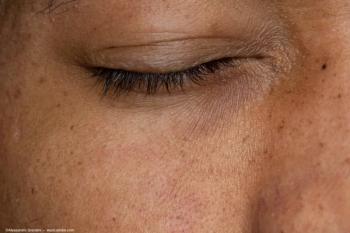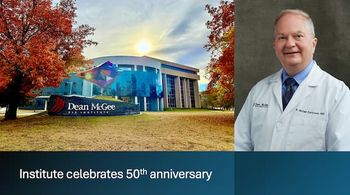
Q&A: Baruch D. Kuppermann, MD, PhD, on the latest in retina

Key Takeaways
- The Retina World Congress showcased global perspectives on surgical and medical retina innovations, emphasizing extended interval therapies and drug delivery systems.
- Collaboration between retina specialists and industry professionals was highlighted, with discussions on emerging treatment practices and innovations.
The Retina World Congress showcases global innovations in surgical and medical retina, highlighting emerging treatments and fostering collaboration among specialists.
At the 2025 Retina World Congress, Opthalmology Times spoke with Baruch D. Kuppermann, MD, PhD, about this international meeting and how it showcases diverse perspectives from global retina specialists, focusing equally on surgical and medical retina innovations. He noted that the conference highlights emerging treatment practices and innovations like extended interval therapies, drug delivery systems, and viral vector gene therapies.
Note: This conversation has been lightly edited for clarity.
Ophthalmology Times: Can you speak to how the international ophthalmic community, especially international retina specialists, are connecting with one another?
Baruch D. Kuppermann, MD, PhD: I'm president of the Retina World Congress, and we really enjoy the fact that it is an interesting meeting. It's unique in the sense that it is still an American meeting, even though it's a very international meeting. One way to look at it: it's the most international retina meeting held in the United States. What that means is there's a very great diversity of speakers on the podium, and we pride ourselves on that. People from all over the world have an opportunity to get up and show their skills, again half of the meeting is devoted to surgery, half to medical retina. Particularly on the surgical side, we see, we learn so many innovations from all over the world. So it's very exciting to see.
OT: How do you find that the industry side of the retina space and the practicing physician side of the space come together at events like this?
Kuppermann: The unplugged session, which happens on Thursday morning, there the podium is full of a mixture of retina specialists and people from pharmaceutical companies. They're engaging. The pharmaceutical company will make a brief presentation. There's a series of those, and a panel will then discuss those themes in that area for half an hour or so. We even had Dr William Boyd from the FDA on Zoom spend half an hour with us as well. That was engaging. He gave a presentation, and then we had a panel of experts on the stage that engaged with him in dialog and questions. I thought that was very revealing.
OT: As we look toward the future of ophthalmology and particularly the retina space, where do you see the field going?
Kuppermann: It's a new era, I would say what's clearly emerging is an era of extended treatment intervals. Let's say that's sort of a precise terminology, because it's not exactly extended duration necessarily. We're now learning that we can inject drugs like Eylea, Eylea high dose, and Vabysmo, and have extended intervals between treatment. That may mean that there's a period of time where there is actually no drug on board before you then retreat. That's the initial generation of extended duration. Now the next one that's evolving are drug delivery systems. There's already the port delivery system, but also the TKIs that are being developed, vorolanib by EyePoint and axitinib by Ocular Therapeutix with drug delivery systems that will also allow us to extend the interval of treatment with chronic delivery of drug, and that's an important thing. And then finally, there's the viral vector gene therapy approaches, where you can either go subretinal, intravitreal or suprachoroidal to get a one, and if not done, then a one and much less treatment intervals, where now you have chronic expression of anti-VEGF therapy within the eye. What that also means, and what a lot of the discussion is surrounded is, in this era of extended durability or extended treatment intervals, what is the interval of treatment versus what is the interval between examinations of the patients? We're probably going to be examining patients more frequently than we're going to need to treat them, which is an interesting change from the treat and extend model that we've had for years. So a very exciting time. Lots of new innovation shown, great surgical innovations, great interactions with the industry, great medical retina presentations. It's been a wonderful meeting.
Newsletter
Don’t miss out—get Ophthalmology Times updates on the latest clinical advancements and expert interviews, straight to your inbox.


















































.png)


